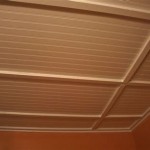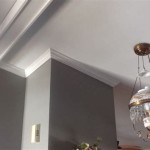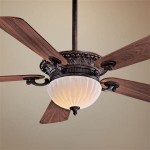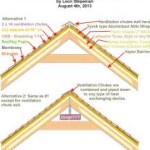What To Do With Old Ceiling Tiles In Atlanta, GA Area For Free
For Atlanta, GA residents facing the dilemma of disposing of old ceiling tiles, understanding the available options for free disposal or repurposing is crucial. Proper handling is essential, considering potential health hazards and environmental regulations. This article details several avenues for managing these materials responsibly and without incurring costs, focusing on options specific to the Atlanta metropolitan area.
Assessing the Material: Asbestos and Other Hazards
Before considering any disposal or reuse method, the composition of the old ceiling tiles must be determined. Older tiles, particularly those installed before the 1980s, may contain asbestos. Asbestos is a known carcinogen, and disturbing asbestos-containing materials can release harmful fibers into the air, posing a significant health risk. In Georgia, as in many states, specific regulations govern the handling and disposal of asbestos-containing materials.
If there is any doubt about the presence of asbestos, testing is paramount. Several environmental testing companies operate in the Atlanta area. These firms can collect samples and analyze them for asbestos content. The cost of testing is typically borne by the homeowner or property owner. However, it's a necessary expense to ensure safe handling and prevent potential legal repercussions associated with improper disposal of asbestos-containing materials. It is illegal to knowingly dispose of asbestos containing materials in the regular trash.
Non-asbestos containing tiles might still pose concerns. Mold growth, particularly in areas with high humidity like Atlanta, is a common issue. Dust and other allergens can also accumulate on ceiling tiles over time. Appropriate personal protective equipment (PPE), such as masks and gloves, is recommended when handling any old ceiling tiles, regardless of their suspected composition.
Free Disposal Options in the Atlanta Area
Finding free disposal options for construction and demolition (C&D) debris, including ceiling tiles, can be challenging. Municipal waste services often have limitations on the types and quantities of materials they accept. Standard curbside collection typically does not accommodate large quantities of C&D waste.
Recycling centers are a viable option, but their acceptance of ceiling tiles depends on the material and the center's specific policies. Certain recycling facilities in the Atlanta area may accept specific types of ceiling tiles, particularly those made from mineral fiber or other recyclable materials. Contacting the local recycling centers directly to inquire about their acceptance criteria is crucial.
DeKalb County, Fulton County, and other surrounding counties in the Atlanta metro area often host periodic community cleanup events. These events may offer free disposal of bulky items and C&D waste. Checking the county government websites or contacting local solid waste management departments can provide information about upcoming events and the types of materials accepted. These events are sporadic, so timing is a critical factor.
Another potential avenue is contacting local construction companies or demolition contractors. Some of these companies may be willing to accept clean, non-asbestos containing ceiling tiles for recycling or reuse purposes. This often depends on the contractor's current projects and their need for specific materials. It requires contacting the companies individually and inquiring about their willingness to accept the tiles.
Free disposal directly with manufacturers may be an option. Major ceiling tile manufacturers sometimes offer take-back programs for their products, even after they have been used. This is especially true for newer, more environmentally conscious products. Checking the manufacturer's website or contacting their customer service department can reveal whether a take-back program exists and the specific requirements for participation, such as minimum quantities or acceptable tile types.
Repurposing and Creative Reuse
Instead of focusing solely on disposal, consider repurposing old ceiling tiles. This can be a creative and environmentally friendly alternative. However, this option only functions if the tiles are non-hazardous.
Ceiling tiles can be repurposed for soundproofing projects. They can be cut and installed in home recording studios, workshops, or other areas where noise reduction is desired. Their inherent sound-dampening qualities can make them effective in minimizing echoes and reducing noise transmission. If dealing with older tiles, it’s essential to encapsulate them properly to prevent any dust or fibers from being released. Encapsulation involves covering the tiles with a sealant or protective layer.
Ceiling tiles can serve as a base for art projects. Their flat surface provides a sturdy canvas for painting, drawing, or mixed media creations. The textured surface of some tiles can add an interesting dimension to the artwork. If used for children's projects, ensuring the tiles are free from harmful materials and properly cleaned is essential.
Another potential use is as packing material. Clean, non-friable ceiling tiles can be cut into smaller pieces and used to protect fragile items during shipping or storage. This is a more environmentally friendly option than using plastic bubble wrap or Styrofoam peanuts. However, it is crucial to ensure the tiles are securely packed to prevent them from shifting and causing damage during transit.
Smaller sections of ceiling tiles can become decorative wall panels. By painting them, adding fabric, or creating collages, the tiles can be transformed into unique wall art. This is a cost-effective way to add visual interest to a room without purchasing expensive artwork. Consider arranging the tiles in patterns or creating a larger mosaic effect.
Ceiling tiles can also be used to improve insulation in certain areas. For example, they can be placed behind appliances, such as refrigerators or washing machines, to help reduce heat loss or noise transmission. The tiles provide an extra layer of insulation, improving energy efficiency and reducing utility costs. Ensure proper ventilation around appliances when using ceiling tiles for insulation purposes.
Safety Precautions
Regardless of the chosen method, prioritizing safety is paramount. Always wear appropriate personal protective equipment (PPE) when handling old ceiling tiles. This includes a respirator mask to prevent inhalation of dust or fibers, gloves to protect the skin, and eye protection to prevent irritation. Work in a well-ventilated area to minimize exposure to airborne particles.
When cutting or breaking ceiling tiles, create as little dust as possible. Wetting the tiles before cutting can help reduce dust generation. Use a sharp utility knife or saw to make clean cuts, and avoid using power tools that can create excessive dust. Collect any dust or debris immediately using a HEPA-filtered vacuum cleaner.
When transporting ceiling tiles, secure them properly to prevent them from breaking or shifting during transit. Use a covered vehicle or trailer to protect the tiles from the elements and prevent dust or debris from spreading. Follow all local regulations regarding the transportation of construction and demolition debris.
If asbestos is suspected or confirmed, do not attempt to handle the material yourself. Contact a certified asbestos abatement contractor in the Atlanta area. These professionals have the training, equipment, and experience to safely remove and dispose of asbestos-containing materials in accordance with federal and state regulations. Improper handling of asbestos can result in significant fines and legal penalties.
Thoroughly clean the work area after handling ceiling tiles. Use a HEPA-filtered vacuum cleaner to remove any remaining dust or debris. Wipe down surfaces with a damp cloth to remove any residual particles. Properly dispose of any PPE, such as masks and gloves, in a sealed plastic bag to prevent contamination.

Replacing Drop Ceiling Tiles

What Do Asbestos Ceiling Tiles Look Like Removal Pro

Replacing Drop Ceiling Tiles

What Do Asbestos Ceiling Tiles Look Like Removal Pro

Replacing Drop Ceiling Tiles

Replacing Drop Ceiling Tiles

Southside Acoustical Ceilings Home

Southside Acoustical Ceilings Home

Replacing Drop Ceiling Tiles

Southside Acoustical Ceilings Home
Related Posts








